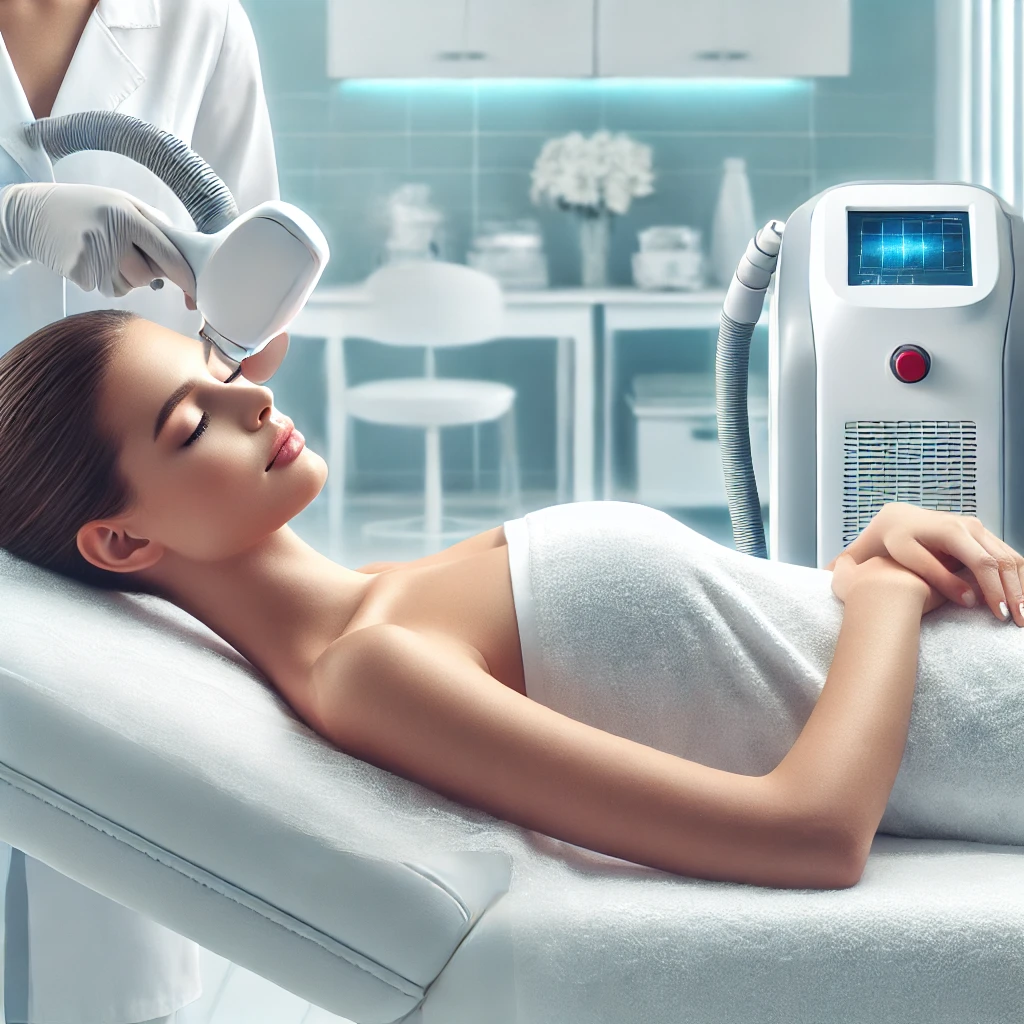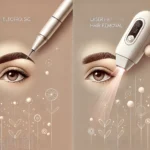Laser hair removal has become one of the most popular cosmetic treatments worldwide. It offers a convenient, long-term solution for unwanted hair, providing smoother skin without the hassle of shaving, waxing, or plucking. However, with any cosmetic procedure, safety is a top concern. Is laser hair removal safe? This article dives deep into the safety aspects of laser hair removal, exploring what you need to know before undergoing the procedure, the risks involved, and how to ensure the best possible results.
The Growing Popularity of Laser Hair Removal
Laser hair removal has transformed the way people approach hair removal. With its ability to target and reduce hair growth in a precise, non-invasive manner, it promises to deliver smoother skin without the need for continuous maintenance. It’s fast, relatively painless, and delivers long-lasting results. However, despite its widespread use, many individuals still wonder about its safety.
In this article, we will explore whether laser hair removal is truly safe, who it’s suitable for, and how to ensure the best experience possible. We will also debunk common myths and address any concerns you may have about the procedure.
How Does Laser Hair Removal Work?
Laser hair removal uses concentrated beams of light to target hair follicles. These beams penetrate the skin, heating up the follicles and inhibiting future hair growth. The procedure works best on hair that is in the active growth phase, which is why multiple sessions are typically required to achieve long-lasting results.
There are different types of lasers used in hair removal, including:
- Alexandrite Laser: Best suited for lighter skin tones and dark hair.
- Diode Laser: Effective for a variety of skin types, particularly those with lighter skin and darker hair.
- Nd:YAG Laser: Ideal for darker skin tones, as it penetrates deeper into the skin without causing harm to the surface.
Each type of laser has its specific advantages, and the choice of which one to use depends on the individual’s skin type, hair color, and treatment area.
Is Laser Hair Removal Safe? Key Factors to Consider
The safety of laser hair removal depends on several factors, including the technology used, the expertise of the provider, and the individual’s skin and hair characteristics. Here, we break down the key elements that ensure a safe and successful experience.
A. FDA Approval and Professional Standards
Laser hair removal is recognized as a safe procedure when performed by qualified professionals using FDA-approved equipment. The FDA regulates and approves laser devices for hair removal, ensuring they meet stringent safety standards.
To maximize safety:
- Choose a certified clinic with experienced technicians or dermatologists.
- Verify that the equipment being used is up-to-date and FDA-approved.
B. Safety for Different Skin Types and Hair Colors
Advancements in laser technology have made the procedure safer for a wider range of skin tones and hair types. However, the results and safety profile can vary:
- Lighter Skin Tones: Alexandrite and diode lasers are typically effective and safe for people with lighter skin.
- Darker Skin Tones: Nd:YAG lasers are specifically designed to minimize the risk of burns or hyperpigmentation in individuals with more melanin-rich skin.
- Hair Color: The procedure is most effective on dark, coarse hair due to its higher melanin content.
Customizing the treatment based on skin tone and hair type ensures optimal results while minimizing risks.
C. Side Effects: What to Expect
While laser hair removal is generally safe, it’s not without potential side effects. Most are mild and temporary, including:
- Redness and Swelling: Common immediately after the procedure, resembling a mild sunburn.
- Skin Irritation: Slight itching or tenderness in the treated area.
- Temporary Pigmentation Changes: Lightening or darkening of the skin, more common in individuals with darker complexions.
Rare but Possible Complications:
- Burns or Blisters: Typically due to improper settings or inexperienced providers.
- Scarring or Infection: Very rare and usually linked to poor aftercare.
The key to avoiding complications is following pre- and post-treatment guidelines and choosing a reputable clinic.
Who Should Avoid Laser Hair Removal?
While laser hair removal is generally safe for most individuals, certain conditions or circumstances may make the procedure unsuitable or riskier for some. It’s important to assess your health and consult a professional before proceeding.
A. Medical Conditions That May Pose Risks
Some underlying health conditions can increase the likelihood of complications:
- Pregnancy: While no conclusive evidence shows harm, many practitioners recommend avoiding laser hair removal during pregnancy due to hormonal skin changes and limited studies.
- Skin Disorders: Conditions like eczema, psoriasis, or active skin infections can be aggravated by the procedure.
- Photosensitivity Disorders: If you have a condition that makes your skin hypersensitive to light, laser treatment may not be advisable.
B. Medications That Increase Photosensitivity
Certain medications can make your skin more sensitive to laser light, increasing the risk of burns or irritation. Common culprits include:
- Retinoids (e.g., Retin-A, Accutane).
- Antibiotics (e.g., tetracyclines).
- Anti-inflammatory drugs.
What to Do: Always disclose your current medications to your provider before scheduling a session.
C. Recently Tanned Skin
Laser hair removal is less effective and potentially more harmful on recently tanned skin. The increased melanin in tanned skin can absorb more laser energy, raising the risk of burns or discoloration.
Recommendation: Avoid sun exposure, tanning beds, or self-tanning products for at least two weeks before treatment.
D. Individuals with Grey, Blonde, or Red Hair
Lasers target the pigment in hair follicles, making the procedure less effective for those with very light or non-pigmented hair. Alternative methods may be more suitable for individuals with these hair types.
Myths vs. Facts About Laser Hair Removal Safety
With laser hair removal’s growing popularity, several myths and misconceptions have arisen, leading to unnecessary fears or unrealistic expectations. Let’s debunk some of the most common myths and separate fact from fiction.
Myth 1: Laser Hair Removal Causes Cancer
Fact: Laser hair removal does not cause cancer.
The lasers used in hair removal are designed to target melanin in hair follicles and do not emit ionizing radiation, which is known to increase cancer risk.
Myth 2: Laser Hair Removal is Painful
Fact: Most people describe the sensation as mild and tolerable.
The level of discomfort varies depending on the treated area, skin sensitivity, and hair type, but advancements in cooling technologies and numbing creams have made the procedure more comfortable.
Myth 3: Laser Hair Removal is Unsafe for Sensitive Areas
Fact: When performed by a trained professional, laser hair removal is safe for sensitive areas like the face, bikini line, and underarms.
Myth 4: Laser Hair Removal Works on Everyone Equally
Fact: The effectiveness of laser hair removal varies based on individual factors such as skin tone, hair color, and texture.
Dark, coarse hair responds best to treatment, while light or fine hair may require additional sessions or alternative methods.
Myth 5: Results Are Instant and Permanent
Fact: Laser hair removal reduces hair growth significantly, but multiple sessions are required to achieve optimal results.
Hair grows in cycles, and the laser can only target active-growth phase follicles. Maintenance sessions may also be needed for long-term smoothness.
Real-Life Experiences and Case Studies
Hearing about real-life experiences can provide valuable insights into the safety and effectiveness of laser hair removal. Here, we share examples of both positive outcomes and lessons learned from challenges others have faced.
Success Stories: Smooth Results Without Complications
- Case Study 1: Treatment for Facial Hair
Background: Sarah, 28, struggled with excessive facial hair due to hormonal imbalances.
Experience: After six sessions with a dermatologist, she achieved an 85% reduction in hair growth. Her only side effect was mild redness that resolved within hours.
Outcome: Sarah now enjoys smoother skin and greater confidence. - Case Study 2: Full-Body Laser Hair Removal
Background: Raj, 34, opted for full-body treatment due to personal grooming preferences.
Experience: Using Nd:YAG lasers for his darker skin tone, the sessions were comfortable, and side effects were minimal.
Outcome: Raj achieved long-term hair reduction after nine sessions and appreciates the convenience of reduced maintenance.
Challenges and Lessons Learned
- Case Study 3: Adverse Reaction from an Unlicensed Provider
Background: Emily, 25, sought an inexpensive treatment at a non-certified clinic.
Experience: During her session, the technician used inappropriate settings, resulting in a burn on her leg.
Outcome: Emily required weeks of recovery and learned the importance of researching providers thoroughly.
How to Ensure a Safe Laser Hair Removal Experience
Laser hair removal is a safe procedure when done correctly. By taking the proper precautions and following professional advice, you can minimize risks and maximize results. Here’s a step-by-step guide to ensure a smooth and safe experience.
A. Choosing the Right Provider
- Research the Clinic or Practitioner:
- Verify their certification and licensing.
- Check online reviews and testimonials.
- Ask About Equipment:
- Ensure they use FDA-approved lasers suitable for your skin type and hair color.
- Request a Consultation:
- During the consultation, the provider should assess your skin, discuss your medical history, and explain the procedure in detail.
B. Pre-Treatment Preparation
- Avoid Sun Exposure:
- Stay out of direct sunlight and avoid tanning beds for at least two weeks before treatment.
- Stop Waxing or Tweezing:
- These methods remove the hair follicle, which is needed for the laser to work effectively. Shaving is recommended instead.
- Avoid Photosensitizing Products:
- Discontinue the use of retinoids, certain acne treatments, and other products that can make your skin more sensitive.
- Get a Patch Test:
- A patch test allows your provider to determine the appropriate settings for your skin and ensures there are no adverse reactions.
C. Post-Treatment Care
- Avoid Hot Showers and Sweating:
- For the first 24-48 hours, avoid hot showers, saunas, or strenuous exercise.
- Apply Sunscreen:
- Use a broad-spectrum SPF 30 or higher on treated areas to prevent pigmentation changes.
- Follow Up with Your Provider:
- Attend follow-up appointments to track progress and address any concerns.
Conclusion: Is Laser Hair Removal Safe?
Laser hair removal is a safe and effective treatment for many individuals when performed correctly. By choosing a licensed, experienced professional, following pre- and post-treatment guidelines, and being aware of the potential risks and side effects, you can achieve smooth, long-lasting results with minimal risk. If you are considering laser hair removal, ensure you consult with a qualified provider to determine if it’s the right choice for you.
In conclusion, laser hair removal offers a safe, efficient solution for those seeking to reduce unwanted hair. With the right precautions and professional guidance, you can enjoy the many benefits of this modern cosmetic procedure without the worry of safety concerns.



